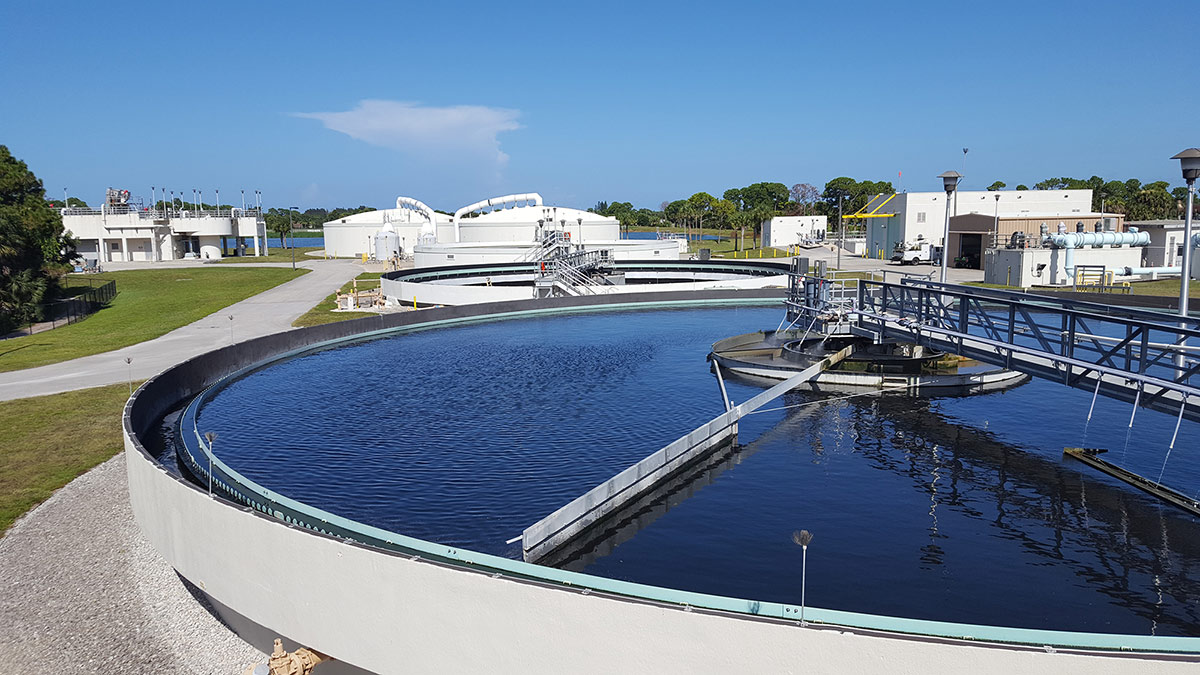Comprehensive Guide to Industrial Waste Water Treatment Processes
Comprehensive Guide to Industrial Waste Water Treatment Processes
Blog Article
Strategic Approaches to Improve Waste Water Therapy Effectiveness and Decrease Environmental Effect
In the realm of waste water treatment, the quest for enhanced efficiency and reduced environmental influence is a perpetual challenge that requires tactical solutions. The assimilation of advanced treatment modern technologies, energy-efficient processes, source recuperation strategies, enhanced nutrient elimination methods, and smart monitoring and control systems stands for a complex framework for resolving these pushing worries.
Advanced Therapy Technologies
Cutting-edge membrane layer filtering systems have changed advanced wastewater treatment procedures, significantly improving the removal of pollutants. These cutting-edge systems work forcibly water via a semi-permeable membrane, effectively separating impurities from the water stream. The membrane layer's microscopic pores catch contaminants such as microorganisms, infections, and suspended solids, enabling just detoxified water to pass through. This innovation has confirmed to be extremely effective in removing a vast array of impurities, consisting of drugs, hefty metals, and natural compounds, which are commonly challenging to get rid of through traditional treatment methods.
Additionally, membrane layer purification systems provide many advantages over conventional therapy strategies. Additionally, these systems are extremely flexible and can be easily integrated right into existing therapy plants or made use of as standalone devices for decentralized applications.
Energy-Efficient Processes
The integration of energy-efficient procedures in wastewater therapy systems is critical for enhancing resource usage and lowering operational prices. One vital method to boosting power effectiveness in wastewater treatment is the utilization of innovative oygenation systems, such as great bubble diffusers or surface area aerators, which can enhance oxygen transfer effectiveness and lower power usage.
In addition, optimizing procedure control and automation through using sophisticated sensing units and keeping an eye on systems can boost general energy effectiveness by adjusting procedures in real-time based upon real need and problems. Executing energy audits and regularly keeping track of power performance indications are crucial techniques to determine locations for enhancement and track energy-saving initiatives successfully. On the whole, the fostering of energy-efficient processes in wastewater therapy not just benefits the setting however also adds to long-term cost financial savings and operational sustainability.
Source Recovery Strategies
With a concentrate on optimizing resource utilization and sustainability in wastewater treatment systems, the application of source healing strategies becomes a crucial element in enhancing operational efficiency. Resource healing strategies in wastewater treatment involve the recognition and extraction of important resources from the waste stream, thus turning what was as soon as taken into consideration waste right into an important asset. By executing resource healing methods such as nutrient removal and healing, energy generation from organic issue, and the manufacturing of recyclable water, wastewater treatment plants can minimize environmental influence while maximizing efficiency.

Boosted Nutrient Elimination Methods
Implementing sophisticated nutrient removal strategies is essential for enhancing the effectiveness of wastewater therapy systems. Boosted nutrient removal plays a vital role in reducing the ecological effect of cured effluent discharged right into water bodies. Among the essential strategies made use of for boosted nutrient removal is the procedure of organic nutrient removal (BNR), which entails the removal of nitrogen and phosphorus via organic processes. This can be achieved via making use of specialized bacteria that can transform nitrogen compounds into inert nitrogen gas through denitrification, and collect phosphorus within their cells with a process called improved biological phosphorus elimination (EBPR)

In enhancement to BNR, progressed therapy techniques such as membrane bioreactors (MBRs) and built wetlands can likewise be employed to enhance nutrient elimination performance. By including these innovative nutrient removal techniques right into wastewater therapy communities, systems and markets can efficiently decrease nutrient pollution and shield the setting.
Smart Tracking and Control Solution
Utilizing cutting-edge technology, the assimilation of wise monitoring and control systems revolutionizes the functional effectiveness of wastewater therapy facilities. These systems include sophisticated sensors and information analytics to constantly keep track of vital specifications such as pH levels, turbidity, liquified oxygen, and circulation rates in real-time. By accumulating and examining this data, operators can get useful insights right into the efficiency of the therapy processes, enabling aggressive modifications to maximize treatment effectiveness.
Smart monitoring and control systems additionally support remote surveillance capabilities, enabling drivers to accessibility real-time information and control features from off-site places. This remote accessibility improves functional flexibility and responsiveness, allowing swift treatments in case of system malfunctions or variations in influent quality. The predictive maintenance abilities of these systems aid prevent devices failings and reduce downtime, inevitably improving the overall dependability of wastewater therapy procedures.
Verdict
In conclusion, calculated techniques such as innovative therapy technologies, energy-efficient processes, source recuperation strategies, enhanced nutrient removal techniques, and smart tracking and control systems play an essential function in improving my website wastewater treatment effectiveness and lessening environmental effect. By carrying out these methods, wastewater treatment plants can enhance their general performance, minimize power usage, recuperate useful sources, and make sure conformity with environmental regulations. These approaches are vital for efficient and sustainable wastewater management practices.

In verdict, tactical strategies such as advanced therapy technologies, energy-efficient procedures, resource recuperation techniques, boosted nutrient removal methods, and wise monitoring and control systems play a crucial function in boosting wastewater therapy efficiency and decreasing environmental effect.
Report this page